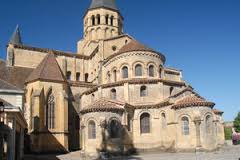All the Abrahamic religions (Judaism, Christianity, Islam) stress the importance of prayer. The Jewish Bible talks about praying multiple times a day. One of the most important Christian texts of the New Testaments is the Lord's Prayer, that Jesus taught his disciples. Followers of Islam are expected to pray five times a day; it is one of the Five Pillars of the faith.
Although in majority-Muslim countries it is common to hear the call to prayer coming at regular intervals, with everyone expected to stop what they are doing for a few minutes of prayer, the intervals are not nearly so set for Jews and Christians. Still, many Christian households have regular morning and evening prayers (as referred to in the hymn often sung in church, "Sweet Hour of Prayer"), and there are Jewish prayers that attend the Sabbath.
Medieval monks had not just five but eight specified hours of prayer. These were the times that all the monks were expected to be in church, performing the liturgy, singing the psalms. If they were away from the monastery they were still expected to stop what they were doing for an interval of prayer. These times were called the "canonical hours."
(This is the monastery of Paray-le-Monial in Burgundy.)
Churches, including cathedral churches, parish churches, basilicas and other churches without monks would also ring the bells for these canonical hours, even if there were no formal services associated with them.
The first one in the morning was Prime (you already guessed that, didn't you), coming at the first hour of the day, that is right after sunrise. This were followed by Terce, halfway to midday, Sext, at midday, None halfway from midday to sunset, Vespers at sunset, and Compline as it was getting dark. You will note that until you get to Vespers it's all measured in hours from sunrise, one, three, six, and nine.
Compline was time for bed, but monks did not sleep through the night. Deep in the night (midnight) they rose for Nocturns, the night office, followed by Lauds as dawn was starting to lighten the sky.
It is difficult to say exactly how these canonical hours would correspond to our clocks, because until the late Middle Ages hours were not a set length. That is, it was always assumed that there were twelve hours of day and twelve of night year round, so the hours had to be shorter or longer. (See more here on medieval ideas of time.)
This meant that in the summer they really had to hustle to get both night offices (Nocturns and Lauds) in, plus get the monks enough sleep. In practice a nap during the day was allowed. In the winter, the monks would often not bother going back to bed between the Night Office and Lauds, or between Lauds and Prime, if they'd already had enough sleep since Compline.
The one big meal of the day was at None, what we would call the middle of the afternoon. Since they'd been up and working since the sun first rose, they were plenty hungry. My own thought is that the term "noon meal" (the meal at None) slowly crept its way back toward midday, and with it the definition of "noon." (See more here on medieval meal times.)
During the summer, monks (at least at less austere monasteries) might have a little snack earlier, and there would often be some soup (origin of the word supper) between Vespers and Compline.
© C. Dale Brittain 2021
For more on the medieval church, see my ebook Positively Medieval, available on Amazon and other ebook platforms. Also available in paperback.


No comments:
Post a Comment